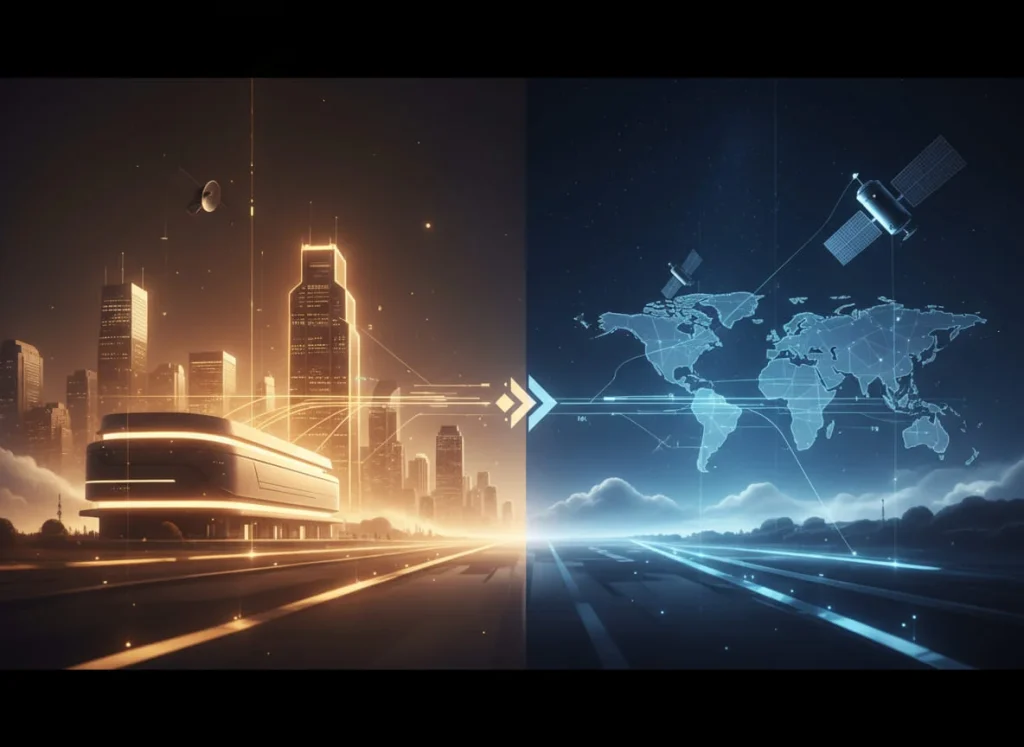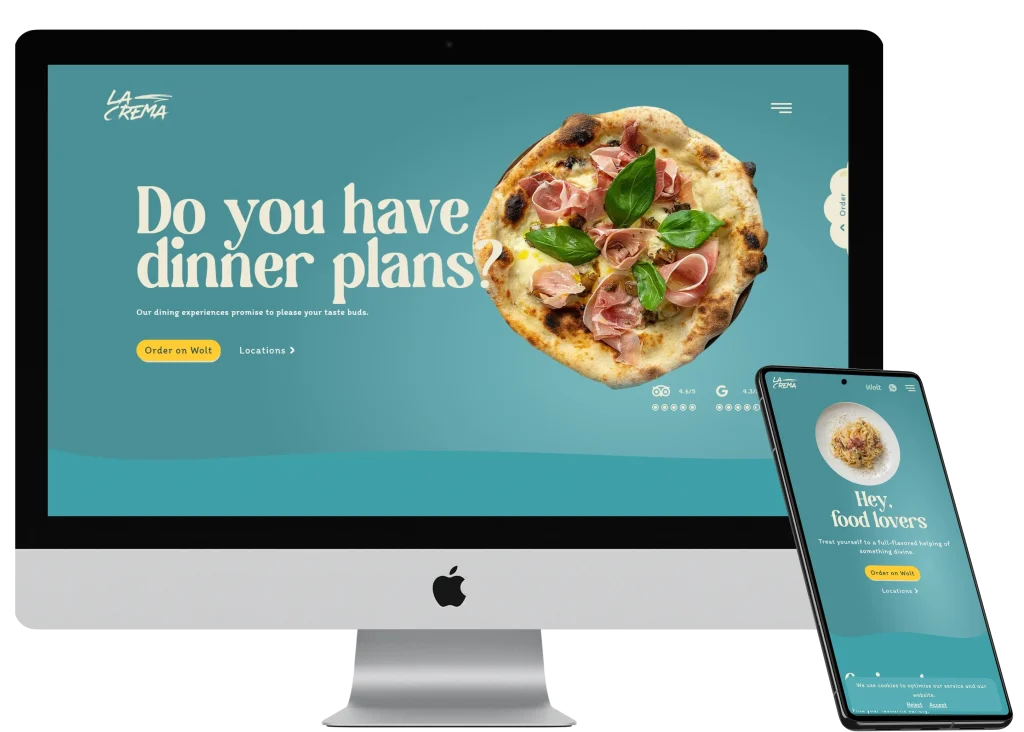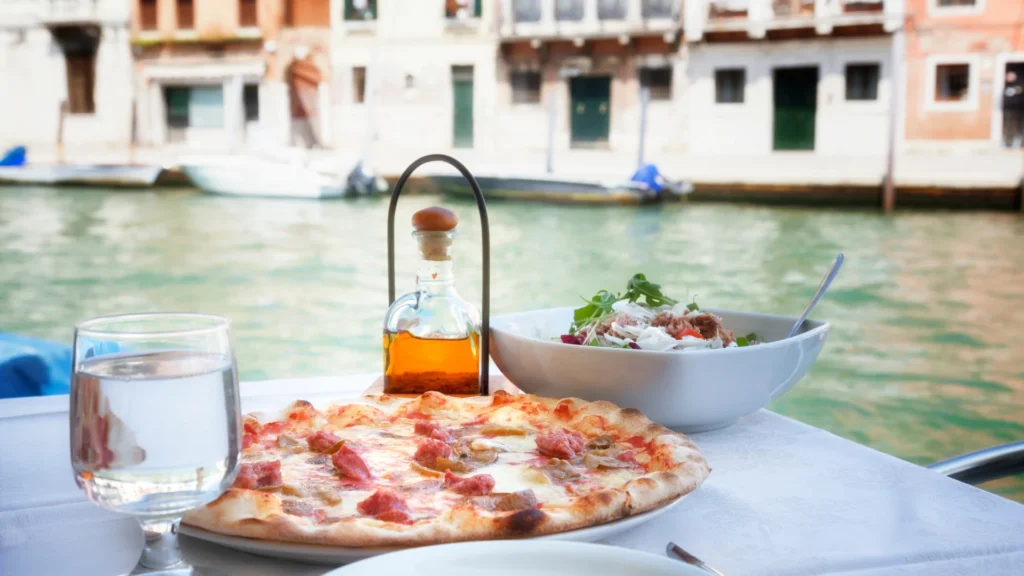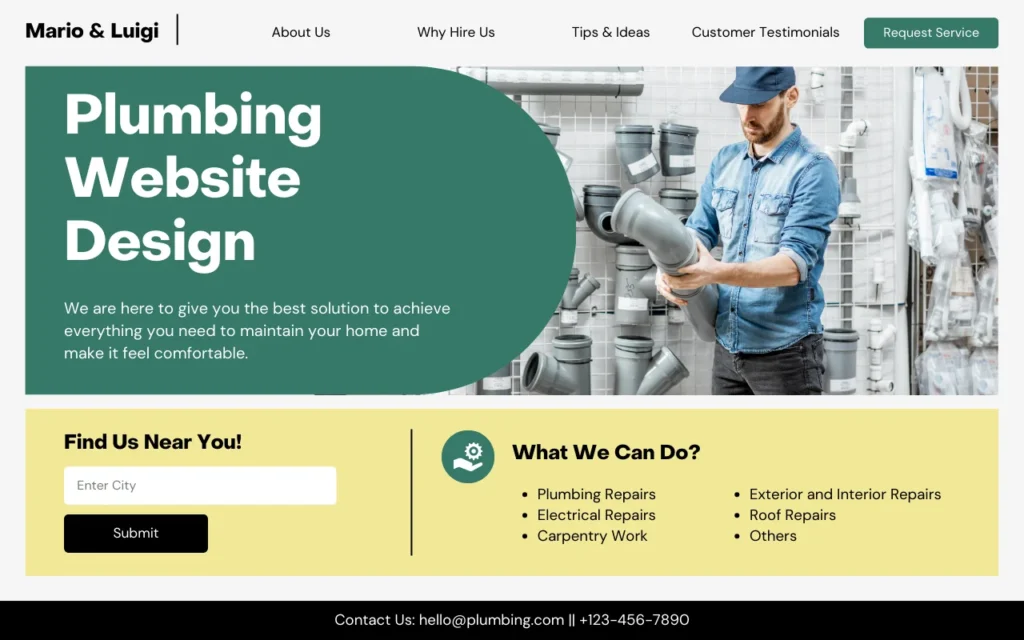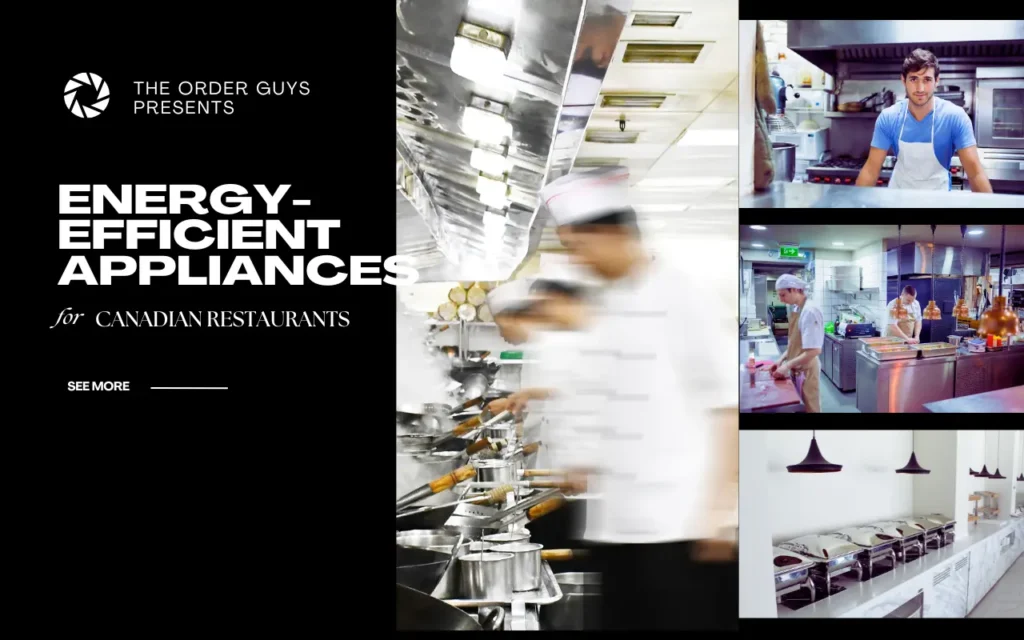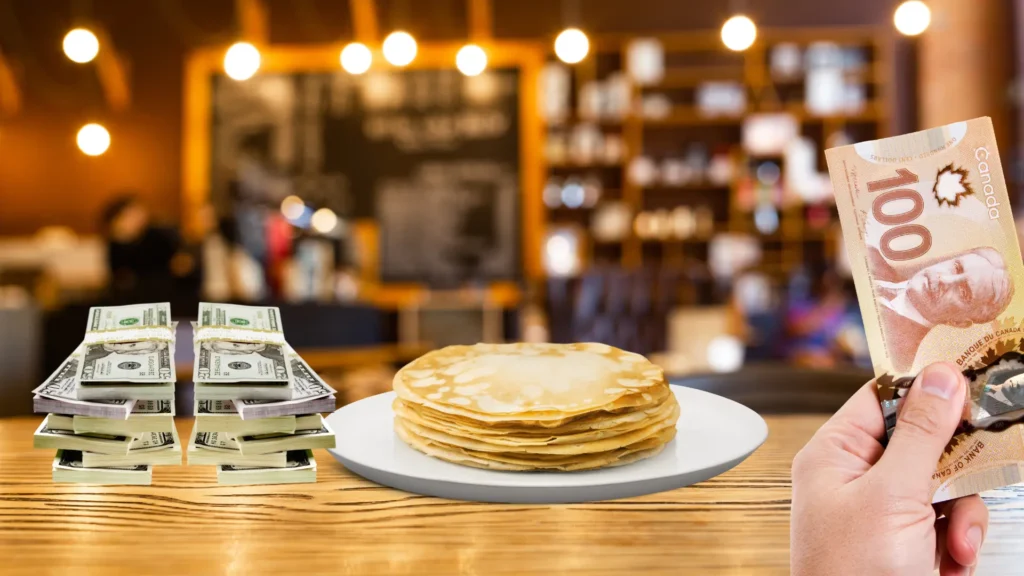Your restaurant’s logo isn’t just a pretty picture—it’s the cornerstone of your brand’s online identity. The right design fuels your website’s first impression, powers your social media posts, and strengthens your local SEO by making your brand instantly recognizable in search results. In today’s digital-first dining world, a well-crafted logo isn’t just art—it’s strategy.
Understanding Restaurant Logos
While you may think that a restaurant logo is merely a decorative addition to your establishment, in reality, it’s a vital aspect of your brand identity. Your logo serves as a visual representation of your restaurant’s personality and communicates directly with your target audience. A well-designed logo can convey the type of cuisine you offer, the ambiance of your space, and even your restaurant’s values. As you commence on the journey of designing your logo, it’s crucial to understand the different types of restaurant logos and what each brings to the table.
Types of Restaurant Logos
Restaurant logos can be categorized into several types, each serving a unique purpose and appeal. Understanding these types can help you choose the right approach for your logo design. Here’s a breakdown:
| Logo Type | Description |
| Wordmark | Includes just the name of the restaurant in a stylized font. |
| Lettermark | Utilizes initials as the main branding element. |
| Pictorial Mark | Incorporates a recognizable image relating to the restaurant’s theme. |
| Abstract Mark | A geometric form that expresses your brand’s essence without being too literal. |
| Emblem | A more intricate design combining text and imagery, akin to a badge. |
The type of logo you choose will significantly influence how customers perceive your restaurant and can impact their desire to dine with you. Take the time to explore each type in depth and consider what best fits your brand’s identity and mission.
Factors Influencing Logo Design
Logos are more than just pretty pictures; various factors influence their design process. The first step is to understand your target audience and what appeals to them visually. Additionally, the style of cuisine, your restaurant’s location, and the overall vibe you wish to convey all play critical roles in shaping your logo. To create a memorable and effective logo, consider the following:
- Your target demographic and their tastes
- The message and values your brand represents
- The design elements that resonate with your culinary style
- The colors that effectively evoke the sentiments you wish to convey
- The consistency of your logo with other branding materials
Knowing these factors will ensure that your logo reflects not just the essence of your restaurant but also connects with your audience on a meaningful level.
Logos must be designed with a clear understanding of what they represent. The colors, shapes, and fonts you choose should align with your restaurant’s theme, as each design element contributes to your overall brand story. A well-thought-out logo does more than attract attention; it becomes a crucial element that your customers will associate with your dining experience. Knowing all these elements will bolster your chances of success when creating a logo that stands out.
A strong logo often springs from introspective consideration of your restaurant’s brand and vision and identity. It should capture the spirit of what you offer while being flexible enough to adapt as your brand grows. Displaying a coherent visual identity is paramount; thus, ensure that your logo aligns with your interior design, menu presentation, and marketing materials. Knowing this cohesion within your brand will further enhance recognition and loyalty from your customers.
Essential Tips for Designing a Memorable Logo
Many restaurant owners underestimate the importance of a well-designed logo. A memorable logo can be the difference between a customer choosing your restaurant over a competitor. Here are some crucial tips to consider when creating your logo:
- Keep it simple and uncluttered
- Choose the right colors and palettes
- Focus on font selection
- Ensure versatility for different mediums
- Make it timeless, avoiding fleeting trends
After following these tips, you can create a logo that effectively represents your restaurant’s brand identity.
Simplicity is Key
On your journey to creating a remarkable logo, simplicity should be your guiding principle. A simple design is more likely to be easily recognized and remembered by your customers. It allows your logo to be versatile, making it adaptable for different marketing materials and platforms without losing clarity or impact.
Moreover, a cluttered logo can confuse your audience, diluting your brand message. By stripping down your design to its crucial elements, you are not only making it visually appealing but also communicating your restaurant’s identity in a straightforward manner.
Choose the Right Colors
Tips for choosing the right colors for your restaurant logo include understanding the psychology behind colors. Different colors evoke various emotions and can significantly influence how your restaurant is perceived. For instance, warm colors like red and orange stimulate appetite and convey warmth, while cooler tones like blue and green can evoke feelings of calm and freshness.
Colors are not just aesthetic choices; they can create associations with specific qualities or feelings related to your restaurant. When opting for your color palette, consider what impression you want to make on your audience, and choose colors that align with the atmosphere you want to create.
Font Selection Matters
Simplicity also extends into your choice of font. The font you choose should reflect the overall vibe of your restaurant. A casual diner might opt for a quirky, handwritten typeface, while a fine dining establishment may benefit from a classic, elegant font. Make sure your typeface is legible across different sizes and formats, as this will impact your brand’s visibility.
For instance, if your restaurant features gourmet cuisine, a sophisticated serif font may be appropriate, while a hip, trendy eatery might resonate better with a modern, sans-serif type. Be mindful of, the right font contributes to the overall mood of your brand and should align with your restaurant’s identity.
Make it Versatile
While designing your logo, versatility should be at the forefront of your mind. A well-crafted logo should work across various mediums, from restaurant signage to social media profiles, ensuring consistent branding. Make sure that your logo looks good in black and white, as well as in color, to maintain its integrity in various applications.
Selection of a versatile logo allows it to remain relevant regardless of changing marketing trends or platforms. By ensuring your logo can work in different sizes and formats, you can effectively maintain your brand’s recognition and presence across all areas of your marketing strategy.
Step-by-Step Guide to Creating Your Logo
All logos have the potential to convey the personality and uniqueness of a restaurant. Below, you’ll find a detailed step-by-step guide that will help you create a memorable logo that resonates with your audience.
| Step | Description |
| Research and Inspiration | Look into existing logos in the food and beverage industry to gather ideas and inspiration. |
| Sketching Ideas | Create rough sketches of your ideas focusing on elements that represent your brand. |
| Digital Design Process | Use design software to create a digital version of your chosen sketch, experimenting with colors and fonts. |
| Gather Feedback and Iterate | Share your designs with friends, family, or potential customers to collect thoughts and feedback. |
| Finalize and Implement | Make any necessary tweaks based on feedback and prepare your logo for final use across your restaurant’s branding. |
Research and Inspiration
Any comprehensive logo creation process begins with research and inspiration. Explore a variety of restaurant logos, both in your niche and beyond, to understand the common styles, colors, and elements utilized in successful designs. Consider what appeals to you and think about the elements that could represent your unique concept.
Additionally, gather inspiration from nature, art, or cultural interests that align with your restaurant’s theme. These influences can spark creative ideas and help you articulate a vision that truly reflects your brand’s essence.
Sketching Ideas
The next step is to translate your research into tangible concepts through sketching. Begin by jotting down various ideas and experimenting with different shapes, symbols, and typography that convey your restaurant’s personality. Allow yourself the freedom to explore multiple directions without worrying about perfection at this stage.
Once you have a collection of sketches, refine the ones that resonate most with your brand identity. This stage is crucial as it allows you to visualize your logo before moving on to digital website design.
For instance, if your restaurant specializes in Italian cuisine, incorporating sketches of pizza slices, wine bottles, or pasta can help establish a direct connection between your logo and the culinary experiences you offer.
Digital Design Process For Restaurant Logo
If your sketches have been narrowed down to a few promising options, it’s time to enter the digital design process. Utilize graphic design software such as Adobe Illustrator, Figma or even Canva to recreate your finest sketches digitally. This phase allows you to play with colors, fonts, and layouts, ensuring that your logo is both eye-catching and representative of your brand.
Experimentation is key—don’t hesitate to try different color schemes and font pairings as these choices can dramatically alter the perception of your restaurant’s brand. Be mindful of, your logo needs to be versatile enough to work on various platforms, from signage to menus.
Process your ideas thoroughly in this phase, as a polished digital logo will better communicate your restaurant’s appeal to potential customers.
Gather Feedback and Iterate
One of the most important steps in the logo creation process is gathering feedback. Share your digital logo drafts with a select group of people, including friends, family, or potential customers. Their insights can offer invaluable perspective and help you identify areas for improvement that you may not have considered.
Taking feedback seriously and being willing to make revisions can significantly enhance the final product. Iterating based on constructive criticism will help you refine your logo into something that resonates not just with you, but also with your target audience.
Another effective strategy is to conduct A/B testing, where you present two design options and gauge which one garners a better reaction from your audience. This empirical approach can bolster your confidence in your final design choice.
Finalize and Implement
Your final step involves refining your logo based on the feedback received and ensuring it meets all branding requirements. At this point, make any last-minute tweaks to color, font size, or layout before preparing it for various applications. Your logo should now be ready to enhance your branding across all platforms.
Implement your logo on your website, social media accounts, menus, and any physical materials, ensuring consistency across your branding. A strong implementation strategy allows your unique identity to shine through, helping your restaurant stand out in a crowded market.
Understanding the significance of a well-crafted logo cannot be underestimated. Your logo serves as the face of your restaurant, impacting first impressions and customer recognition significantly. By following these steps, you will create a logo that authentically represents your brand while leaving a lasting impression on your audience.
Evaluating Your Logo: Pros and Cons
After investing time and resources into designing your restaurant logo, it’s crucial to evaluate its effectiveness. Understanding the advantages and disadvantages of your logo can significantly impact your brand identity and marketing strategies. This assessment will enable you to make informed decisions about whether your logo is resonating with your target audience and representing your restaurant appropriately.
| Pros | Cons |
|---|---|
| 1. Enhances brand recognition | 1. May alienate certain customer demographics |
| 2. Sets the tone for your restaurant’s atmosphere | 2. Could become outdated quickly |
| 3. Conveys professionalism and quality | 3. Risk of overcomplicating the design |
| 4. Provides a foundation for your marketing materials | 4. Can be difficult to reproduce across different formats |
| 5. Helps establish trust with customers | 5. Might not stand out in a crowded market |
| 6. Allows for easier brand extension | 6. Can be too generic |
| 7. Strengthens customer loyalty | 7. May face negative public interpretations |
| 8. Boosts social media engagement | 8. Difficulties adjusting to changing trends |
| 9. Facilitates partnerships and collaborations | 9. May require a major redesign if unsuccessful |
| 10. A well-designed logo can increase sales | 10. Could incur additional costs for rebranding |
Benefits of a Strong Restaurant Logo
One of the key benefits of a strong logo is its ability to enhance your brand recognition. A memorable logo not only helps customers recall your restaurant but also differentiates you from the competition. A unique visual representation of your brand can engage customers emotionally, making them more likely to return. In a market filled with choices, this distinctive identity is critical for attracting and retaining loyal patrons.
Another compelling advantage is the professional image it conveys. A well-crafted logo suggests quality and reliability, which is imperative for building trust with your audience. When customers perceive your logo as credible and appealing, they are more inclined to dine at your establishment, fostering a robust reputation in the community. This professional appearance also translates to promotional materials, further solidifying your brand’s presence.
Common Pitfalls to Avoid
Assuming your logo will automatically resonate with everyone is a common pitfall many restaurant owners fall into. It’s imperative to conduct thorough market research to understand your target audience’s preferences and cultural sensitivities. Your logo should resonate with your clientele and represent your restaurant’s unique characteristics. A logo that doesn’t connect with your audience can hinder your marketing efforts and brand loyalty.
Moreover, neglecting to consider how your logo performs across different mediums can be detrimental. Your logo should look cohesive whether displayed on a website, social media, or printed materials. If your logo appears inconsistent or unprofessional in different formats, it could undermine the brand image you are trying to cultivate.
To address potential pitfalls, regularly gather feedback from customers and assess how your logo is perceived. This ongoing evaluation will help you identify any areas for improvement and ensure your logo continues to represent your restaurant effectively as trends change.
How to Adapt Over Time
Pros often come with the territory of maintaining a flexible approach to your logo. As trends and customer preferences evolve, your logo may need to adapt to remain relevant. Incorporating subtle updates rather than a complete redesign can keep your brand fresh without losing what already resonates with your audience. Simple tweaks could involve altering colors or fonts, which could rejuvenate your overall look without detaching from your established identity.
It’s also beneficial to monitor competitor logos and branding initiatives. This information can inspire your logo’s evolution while ensuring you maintain a unique identity. By keeping your finger on the pulse of current design trends and your market, you’ll know when it’s time to refresh your logo, maximizing its impact on customer retention and brand loyalty.
Pitfalls can arise if you try to keep your logo consistently unchanged for too long, risking it becoming outdated or irrelevant. To stay ahead, you should remain open to feedback and willing to adapt—forging a balance between maintaining brand recognition and evolving with the market.
The Role of Branding in Restaurant Logo Design
Now that you understand the importance of having a unique restaurant logo, it’s crucial to recognize how branding plays a crucial role in its design. Your logo acts as the face of your restaurant, encapsulating the essence of your brand and conveying a message about what customers can expect. A well-designed logo isn’t just about aesthetics; it should represent your restaurant’s values, atmosphere, and culinary offerings, acting as a visual anchor that draws customers in and keeps them engaged.
Consistency Across Marketing Platforms
Assuming you have a clear vision of your brand identity, it’s vital to maintain consistency across all marketing platforms. Whether it’s your restaurant’s website, social media profiles, or printed materials, your logo should be used uniformly to create a cohesive experience for your customers. This consistency helps reinforce your brand message, making it easier for customers to recognize and recall your restaurant, which can increase both foot traffic and loyalty.
Furthermore, a consistent logo design across various channels ensures that your marketing efforts strengthen your brand identity over time. Discrepancies can confuse potential customers about what you stand for and dilute your brand’s recognition in a crowded market. Hence, by sticking to the same logo style, colors, and fonts, you create a unified presence that customers can easily associate with your restaurant.
Emotional Connection with Customers
For your restaurant, creating an emotional connection with customers is a game-changer. A logo that resonates emotionally can evoke feelings of nostalgia, comfort, or excitement, motivating customers to choose your establishment over others. This emotional bond often leads to repeat visits as customers associate your brand with memorable experiences—be it a special dinner, a family gathering, or a first date. Your logo thus becomes a visual reminder of those cherished moments, making it more than just a branding tool; it turns into a symbol of personal significance for many.
This connection can be further deepened by telling a story through your logo design. Imagine incorporating elements that represent your restaurant’s heritage, ingredients sourced from local farms, or unique culinary techniques. Each detail can speak to your target audience, helping to build a sense of community and shared values that linger long after the meal is over.
Building Brand Recognition
Design your logo with the intention of building brand recognition. Your goal here is to create a compelling visual identity that stands out in a crowded marketplace. Consider distinctive shapes, color combinations, or typography that resonate with your restaurant’s theme and concept. The key is to ensure that your logo is easily recognizable at a glance, making it simpler for customers to identify your establishment in their daily lives, whether they encounter your logo on a menu, social media, or in a passing advert.
Recognition is incredibly powerful and can significantly affect consumer behavior. When customers repeatedly see your logo and associate it with positive experiences, it can lead to brand loyalty. They are more likely to choose your restaurant over competitors simply because they recognize your brand from a previous visit or recommendation. Invest time in refining your logo, ensuring it not only looks great but functions as a potent tool in your branding arsenal, ultimately setting your restaurant apart from the noise and driving customer engagement.
Budgeting for Restaurant Logo Design
Unlike popular belief, creating a memorable restaurant logo does not have to break the bank. However, it is crucial to allocate your budget wisely to ensure you get the best value for your investment. Your logo is often the first impression potential customers will have of your brand, and it can significantly influence their decision to visit your restaurant. Thus, defining a clear budget for logo design from the start will set you on the path toward success.
DIY vs. Hiring a Professional
You might be tempted to save money by designing your logo yourself using free online tools, and while this can be a viable option, it’s important to weigh the pros and cons. DIY design can allow for creative freedom and minimal costs, but often lacks the intricate understanding of branding principles that a professional designer would bring. If you choose to go this route, be prepared to invest time and effort to ensure the outcome is polished and aligns with your restaurant’s identity.
On the other hand, hiring a professional designer or agency can yield a high-quality logo that truly captures the essence of your brand. While this option may require a higher upfront investment, the expertise and experience they bring can save you time and headaches down the line. A well-designed logo can help establish a strong brand identity, which is invaluable in a competitive market.
Cost Considerations
Considerations for your logo design budget should encompass more than just the designer’s fee; think about the overall value you are receiving. Will the design allow for versatility across various mediums, such as your restaurant’s signage, menus, and online presence? Additionally, consider if any revisions or updates might be required in the future, as these can incur additional costs. It’s also wise to keep in mind that investing in a logo is not just an expense, but an investment in your restaurant’s brand and marketing potential.
Budgeting for your logo design involves evaluating not only current costs but also the long-term financial implications of your choice. A significant difference in price can reflect varying levels of experience and quality, so consider products and portfolios of potential designers carefully. Likewise, think about which elements of your branding you may want to expand or evolve as your restaurant grows, as this may influence how much you should initially allocate toward your logo design.
Tools and Resources for Budget-Friendly Design
If you’re on a tight budget, there are many tools and resources available to help you create a professional-looking logo without the hefty price tag. Many online platforms offer customizable logo templates that allow you to experiment with different styles and design elements. While these tools may not replace the expertise of a professional designer, they can serve as a great starting point to help you visualize your ideas and refine your brand’s look.
With the wide range of resources available, you can find budget-friendly design tools that cater to your specific needs. Websites like Canva, Looka, and Hatchful provide user-friendly interfaces and are packed with features that simplify the design process. Recall, even if you choose to go the DIY route, it’s still worthwhile to consult with peers or industry professionals for feedback to ensure your logo resonates with your target audience.
Future Trends in Restaurant Logo Design
Keep an eye on the evolving landscape of restaurant logo design, as various trends are emerging to guide you toward creating a memorable brand identity that resonates with your audience. Understanding these trends will help you maintain relevancy in an often competitive market and elevate the perception of your establishment. Embracing new design concepts will not only enhance the visual appeal of your restaurant but also promote a lasting impression on your customers.
Minimalist Aesthetics
Some of the most successful logos in today’s market embrace minimalist design, stripping away excess details to focus on simplicity and clarity. By adopting a minimalist aesthetic, you can convey your restaurant’s personality and values with just a few well-chosen elements. This trend emphasizes clean lines, ample white space, and a limited color palette, which all work together to create a logo that is both striking and memorable.
Utilizing minimalism allows your branding to stand out in an overcrowded marketplace, as it often translates to increased versatility across various platforms, from signage to social media. A minimalist logo is not only easy to recognize and remember, but it also adapts seamlessly to different contexts without losing its impact, making it an ideal choice for your restaurant.
Sustainable and Eco-Friendly Practices
Practices focused on sustainability are garnering increasing attention in various design fields, including restaurant logo design. By incorporating eco-friendly principles into your branding, you send a powerful message about your commitment to sustainability and environmental consciousness. This can resonate with customers who prioritize supporting brands that align with their ethical values, thereby drawing them in and creating a loyal customer base.
This trend can be reflected in your logo through the use of earthy color palettes, organic shapes, or even symbols of nature, such as leaves and trees. Moreover, utilizing sustainable materials in your logo’s creation, such as recycled paper for printed materials or eco-friendly inks, can further enhance your brand’s image as one that cares for the planet. Adopting these practices can differentiate you from competitors who may not prioritize sustainability.
The Rise of Digital-Only Logos
Assuming you’ve noticed the increasing influence of digital media in our daily lives, it’s no surprise that logos designed specifically for online platforms are gaining popularity. These digital-only logos often incorporate animated elements, 3D designs, or vibrant colors to grab attention and engage viewers. By focusing on a digital-first design, you can effectively cater to a predominantly online audience and stay ahead of the curve in an ever-evolving media landscape.
Moreover, a digital-only logo can provide room for creative representation and interaction, enabling you to create a logo that is not just a static image but an engaging component of your overall branding strategy. Given that consumers frequently engage with brands through screens, developing a logo that translates well in a digital format is becoming increasingly imperative to maintain your brand’s modern appeal.
EcoFriendly logos, driven by contemporary design techniques and digital capabilities, are paving the way for a revolutionary approach to branding. Your restaurant can leverage this shift by investing in a logo that not only communicates your values effectively but also meets the expectations of a tech-savvy audience. With these trends, you can expect to create a logo that is not only visually engaging but also represents a forward-thinking ethos.
Restaurant Logo Final Words
On the whole, creating a memorable restaurant logo is a strategic process that requires careful consideration of your brand identity, target audience, and design principles. By understanding your restaurant’s unique concept and values, you empower yourself to make design choices that resonate with customers and leave a lasting impression. As you begin on this creative journey, remember to take the time to brainstorm ideas, gather feedback, and refine your logo to ensure it accurately represents your vision. Ultimately, a well-crafted logo is not just a visual emblem; it is a powerful tool that can enhance your marketing efforts and foster brand loyalty.
Moreover, your logo is often the first point of contact with potential customers, so investing in its design is imperative for standing out in a competitive industry. Use this guide as a roadmap, and don’t hesitate to seek professional input if needed. By following the principles outlined, you will be well on your way to designing a logo that not only captures the essence of your restaurant but also invites customers to experience the unique dining experience you offer. With attention and creativity, your logo can become a cornerstone of your restaurant’s identity, leading you toward greater success.


